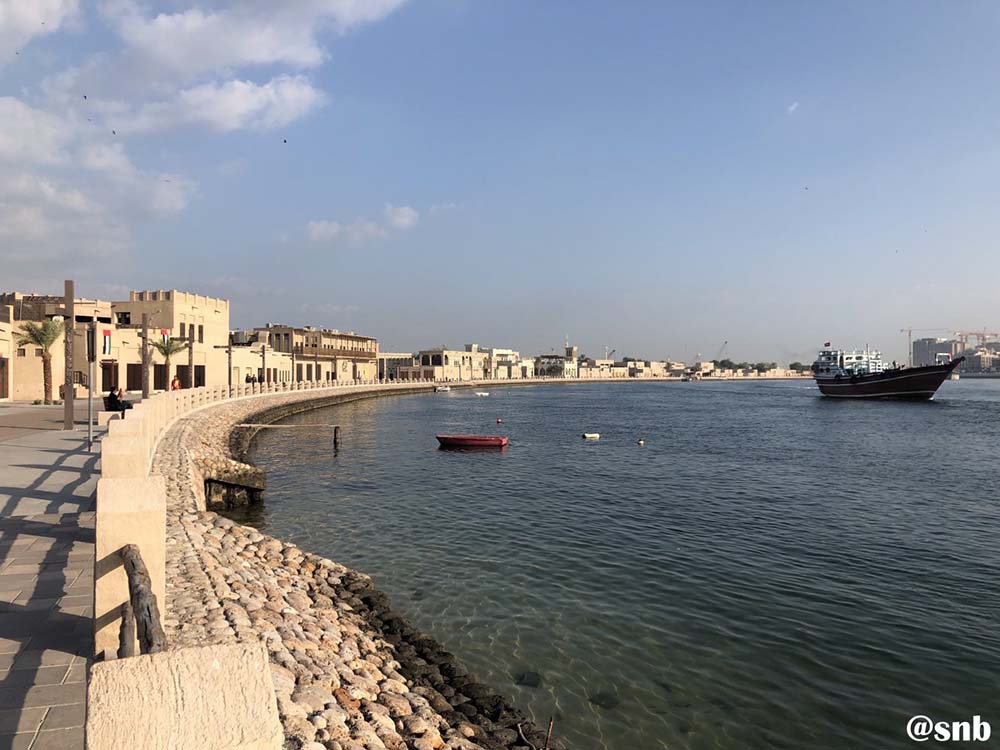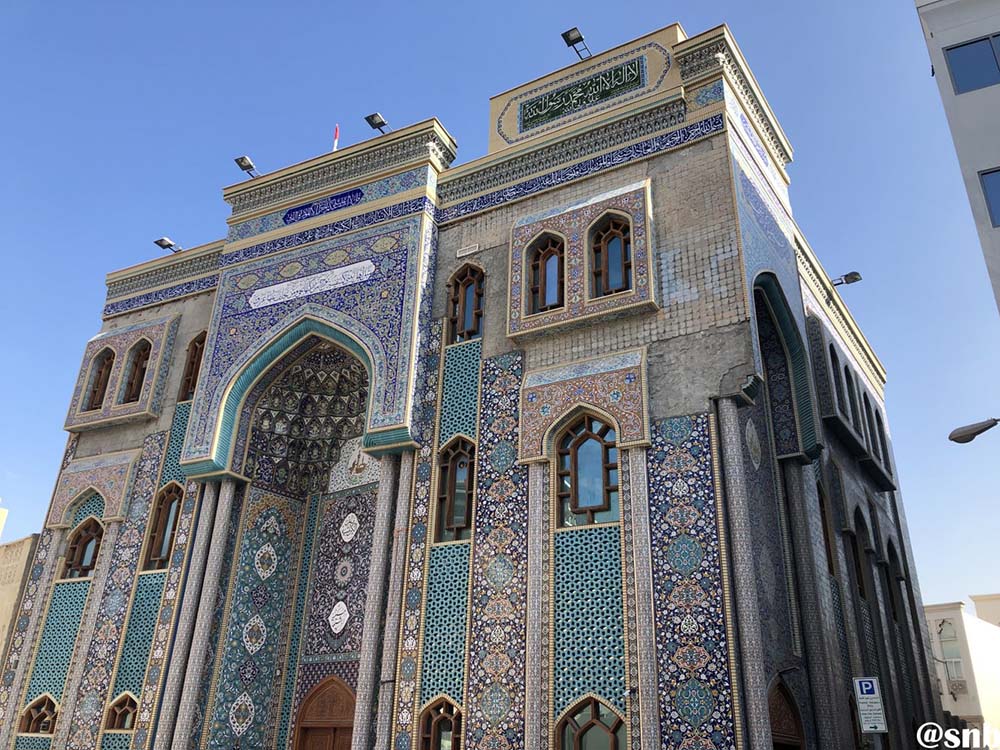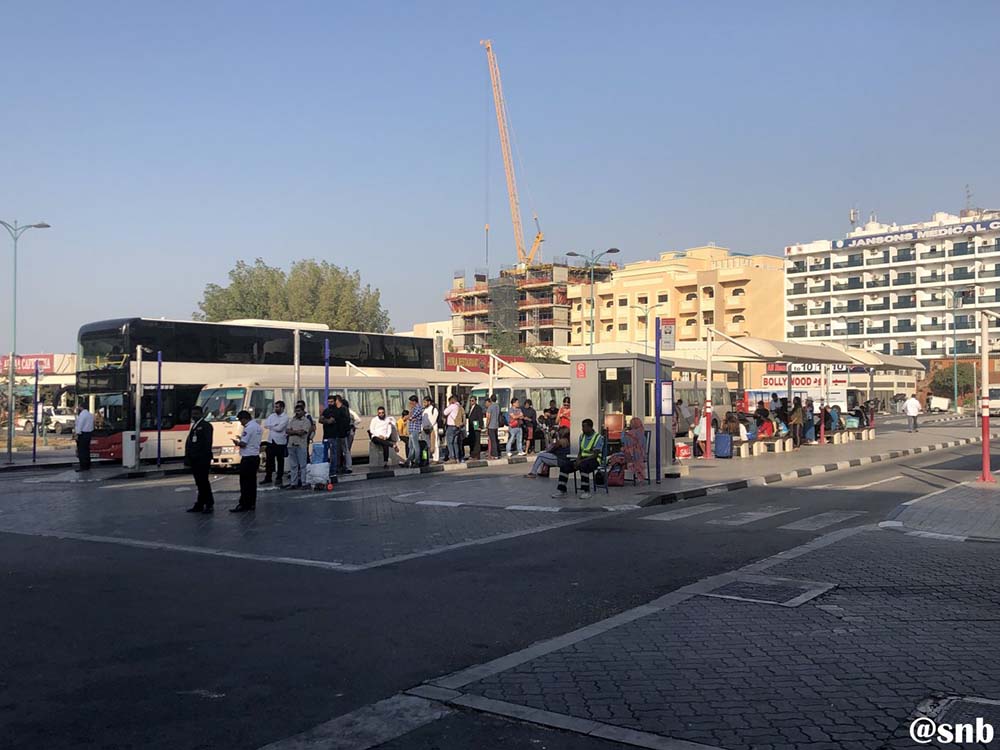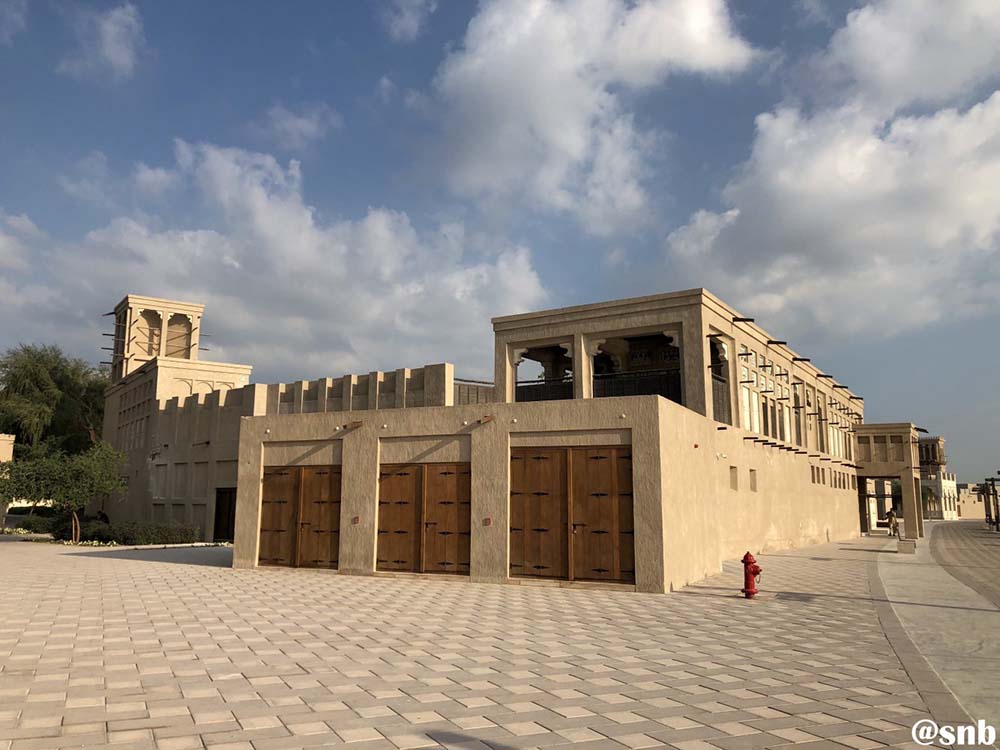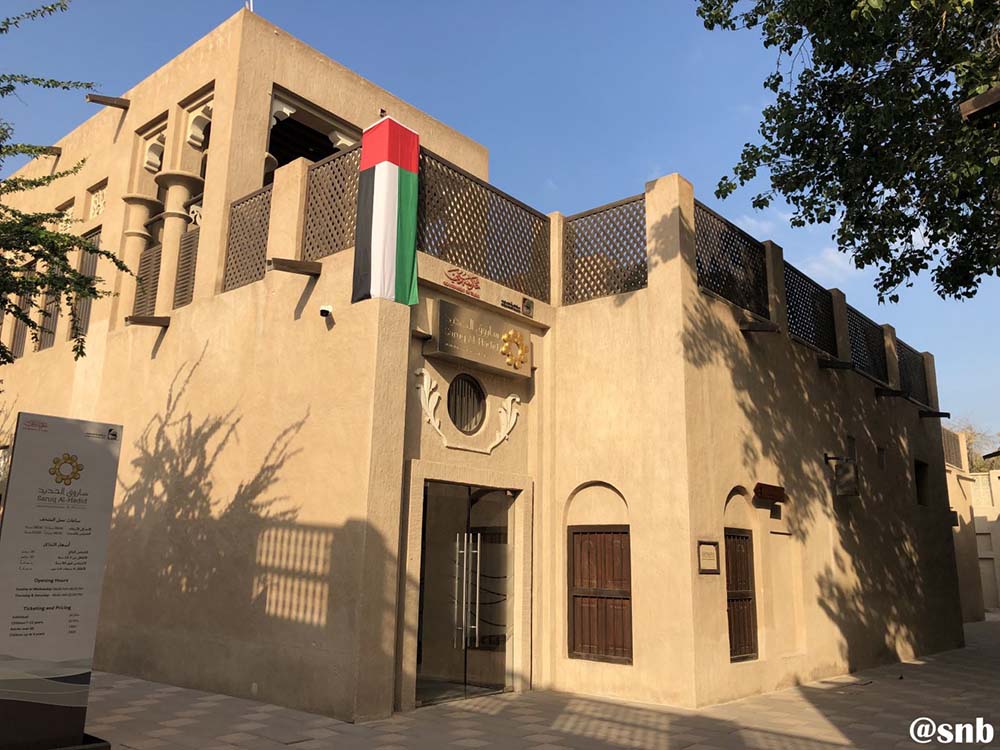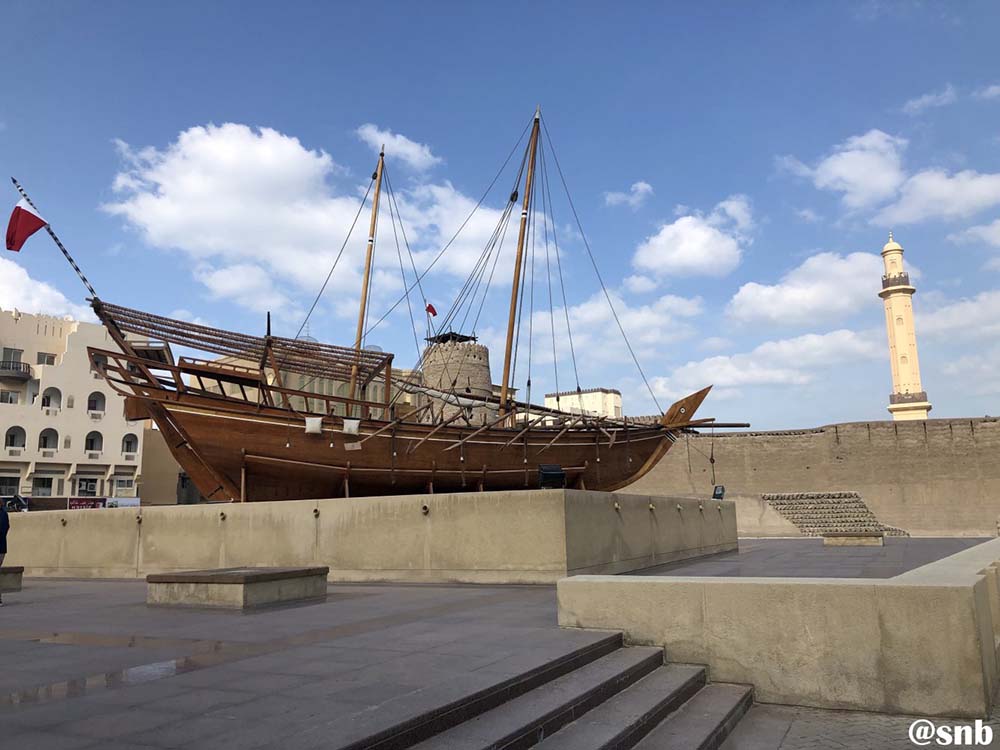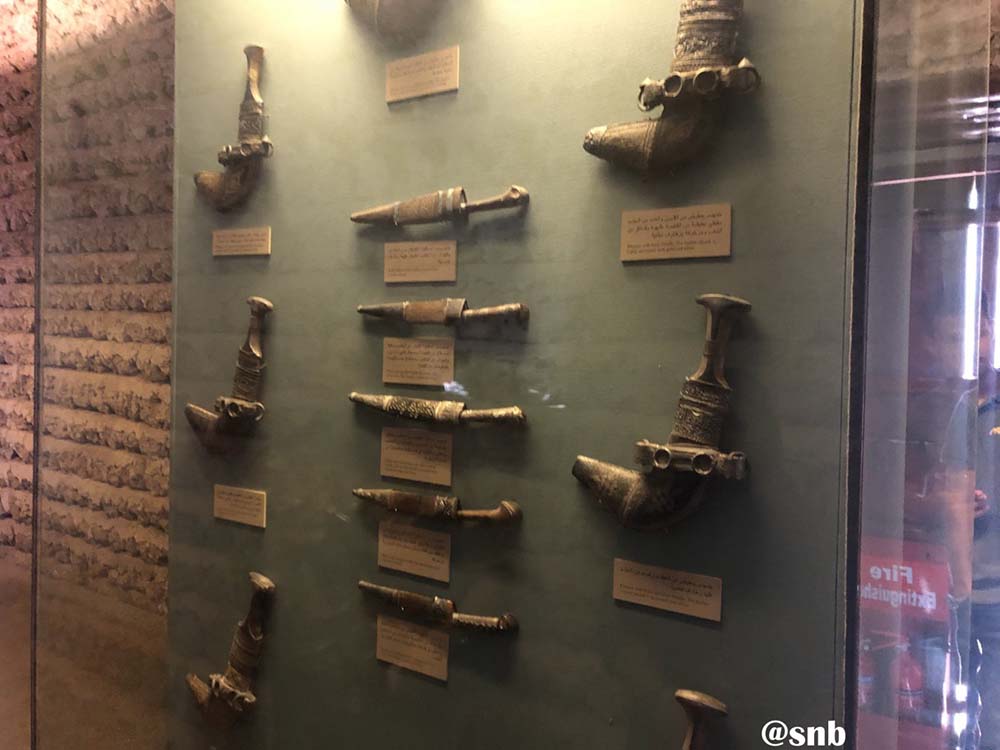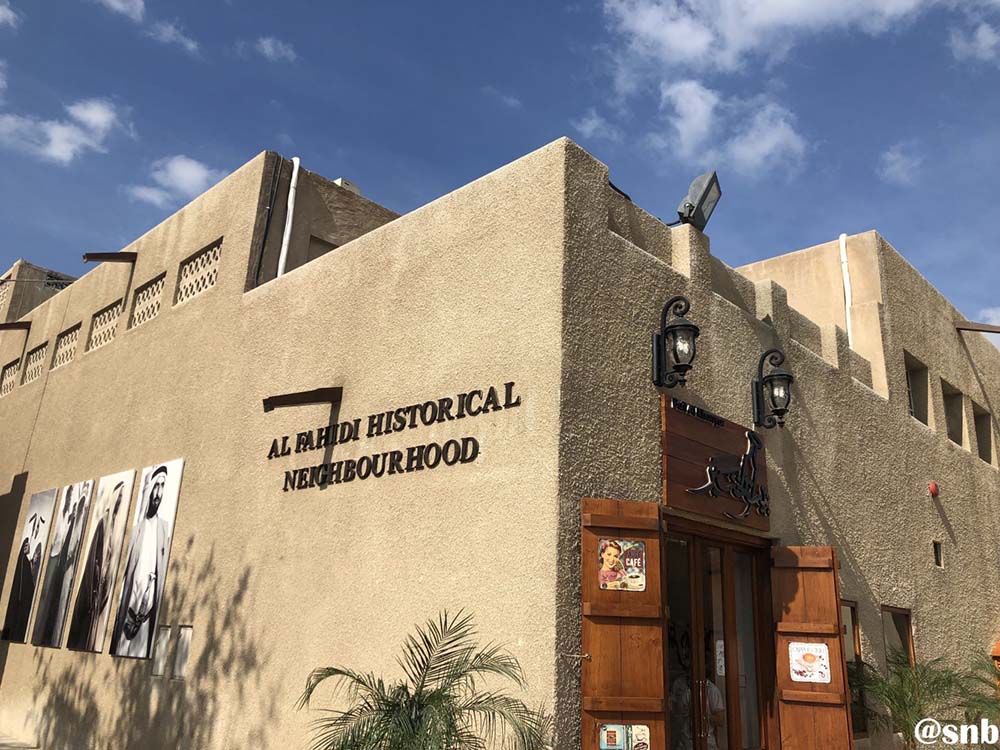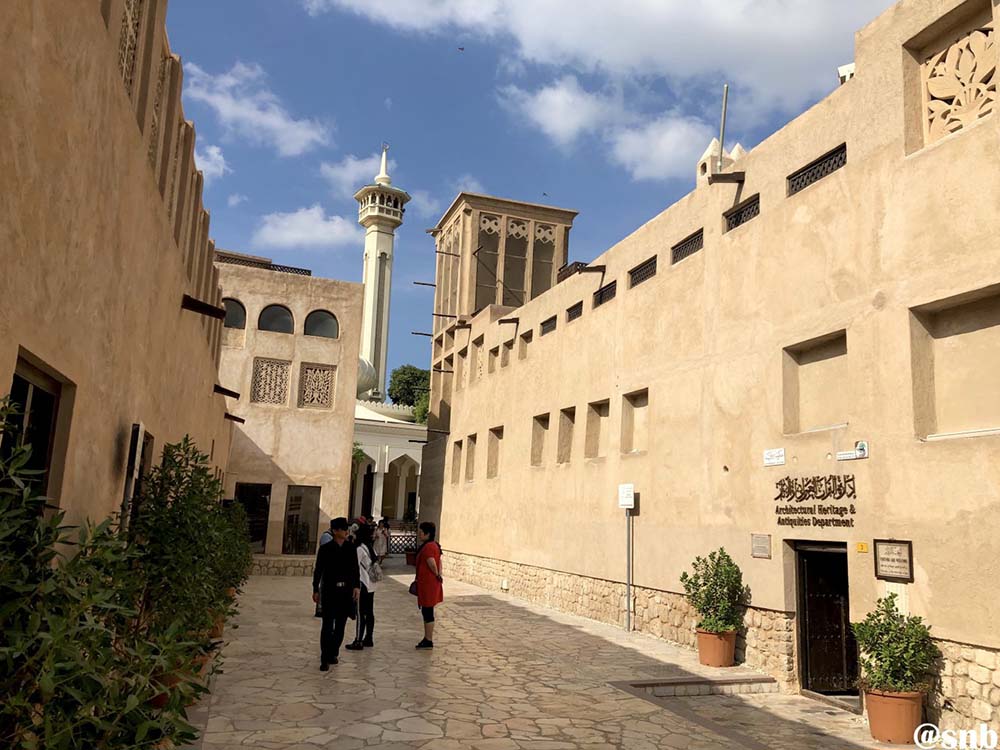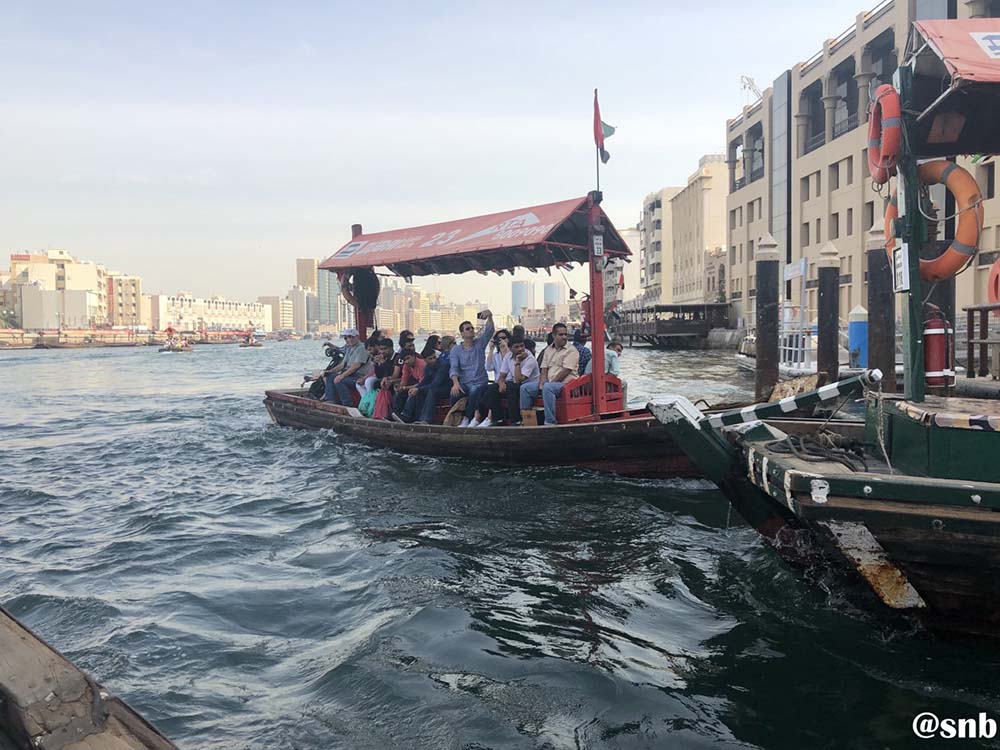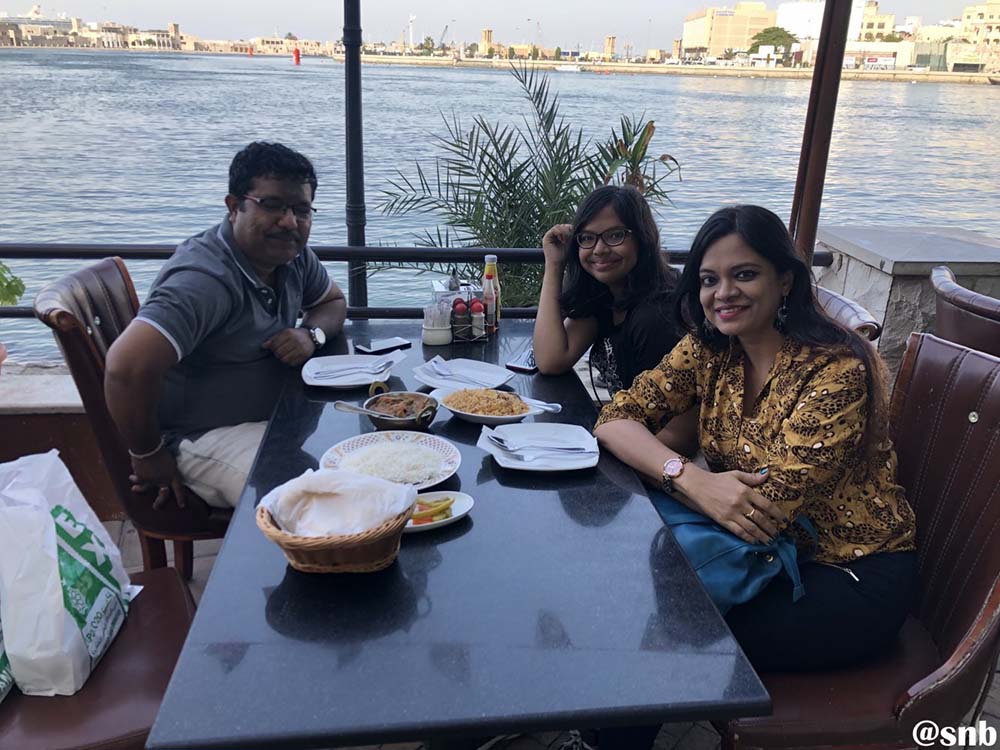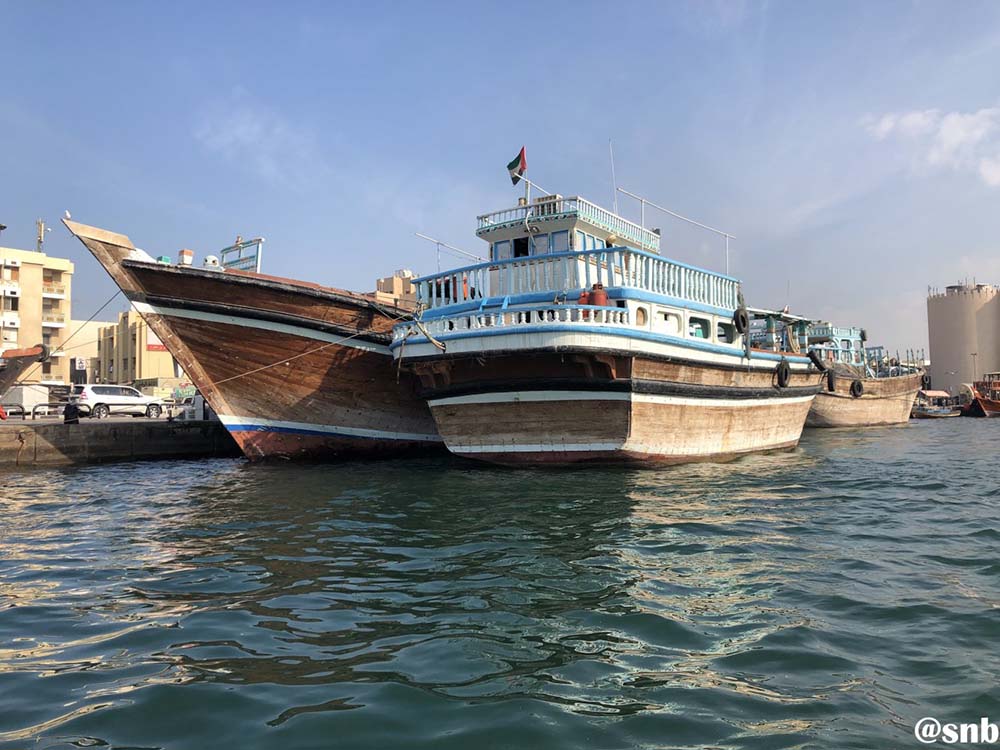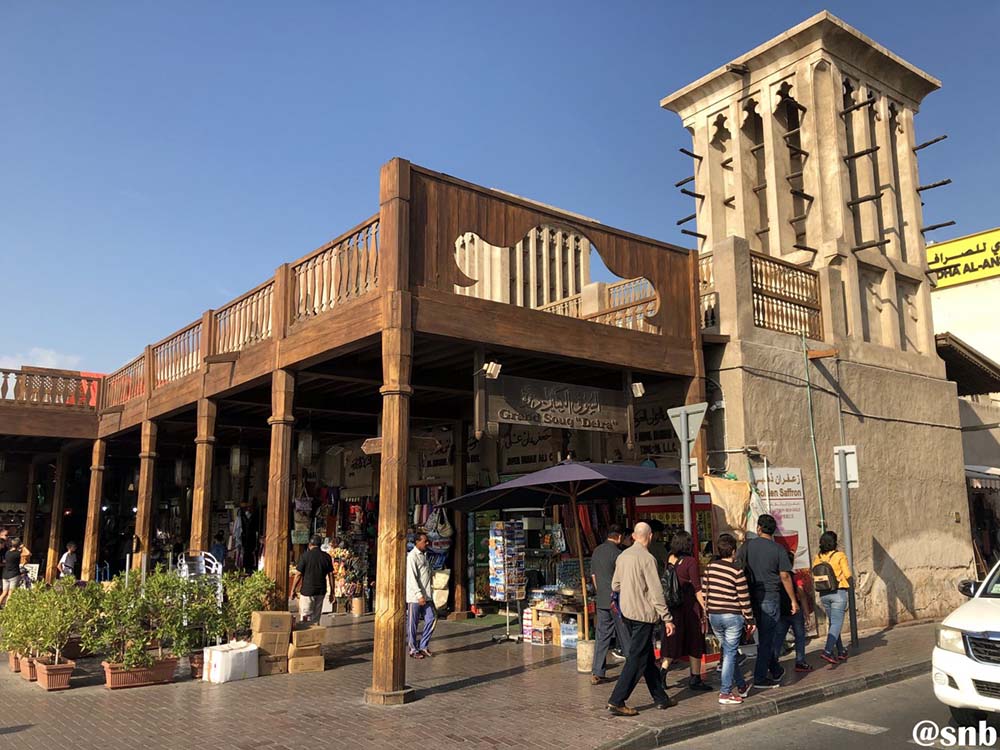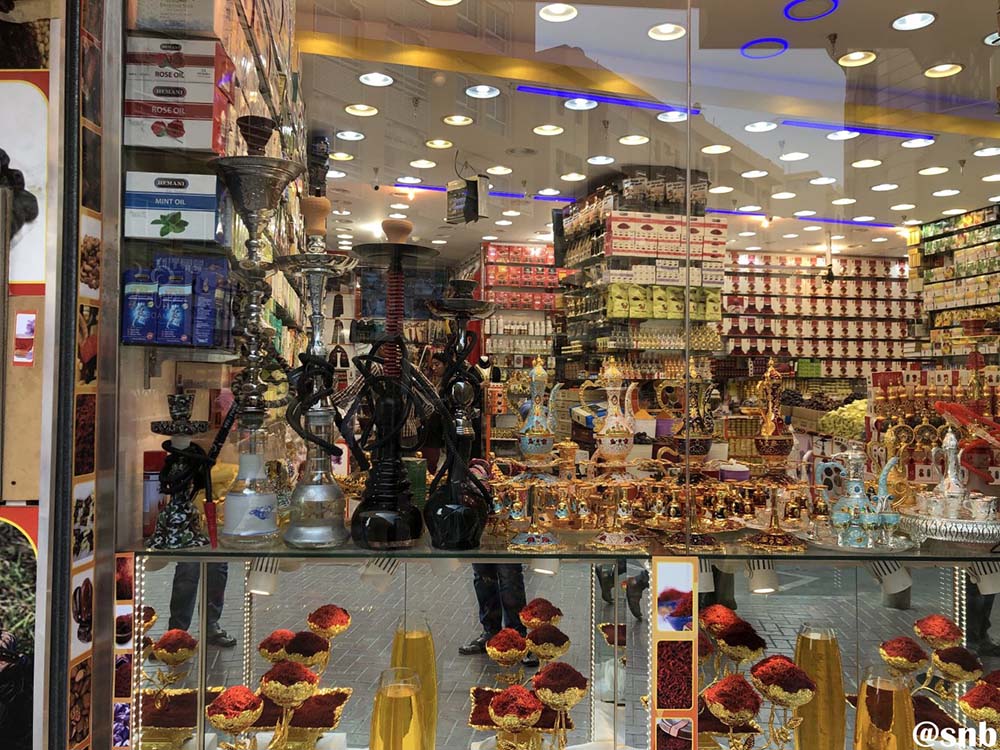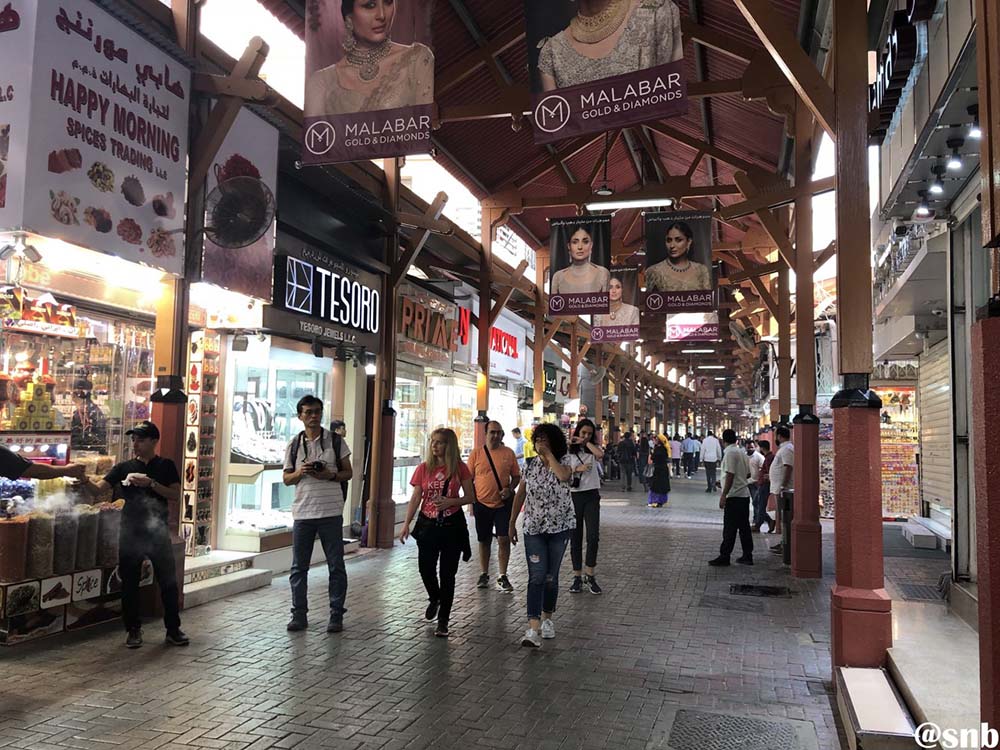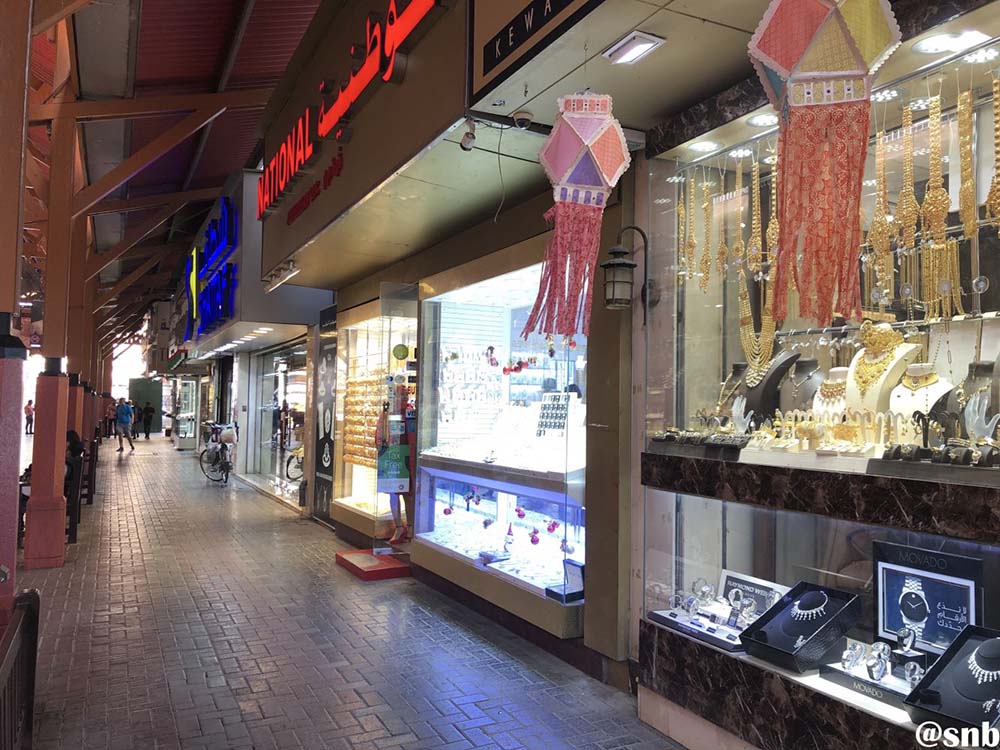Bur Dubai, along with Deira, forms old Dubai. At the beginning of the twentieth century, Dubai, which grew up around the creek, was 3 km long and 1 km wide. Bur Dubai was developed primarily as a residential area and Deira, on the other side of the creek, was developed primarily as the area for trade and commerce.
In this post, I will provide a detailed log of our road trip from Dubai to Bur Dubai. To read the previous part of the travelogue, please click on the link below.
Journey So Far: Dubai Travelogue – A Journey to the City of Dreams
Bur Dubai comprised traditional quarters built using various materials and methods of construction. Most of the houses were made from palm fonds, (Al Khaimah) while along with the age of creek, houses were constructed from sea stones (Al Arish).
Al Khaimah is the primitive house in which the inhabitants of the Gulf coast area resided. Al Khaimah usually consists of one room of different sizes. The light buildings used to be constructed of palm tree fibers. It is warm in winter, cool in summer, and allows draughts of air to blow through when it gets very hot.
Al Arish is a summer house with a wind tower made of burlap pieces placed on the top. The wind tower is an effective means to get breezes of air blowing in whatever direction. In winter, people tend to leave Al Arish and live in tent seeking warmth.
The countryside around Bur Dubai was flat, surrounded by oases of palm trees, and was no more than 2 meters above sea level. This provides ample space for the eventual expansion of the city – the creation of today’s downtown Dubai.
Quick Navigation
Bur Dubai and Deira
On account of its long history of trade and human and cultural diversity, Bur Dubai and Deira give a different kind of feel. Landmarks, areas, and markets had names reflecting this diversity. In 1908, there were 350 shops at Deira and 50 shops at Bur Dubai, specializing in selling certain goods. This led to the establishment of famous souqs (markets) such as Al-Kabeer, Al-Manazer, Al-Tamoor, Al-Arsa, and AL-Sabkha.
Also Read: San Francisco to Los Angeles – How to Plan a Road Trip
The early city was surrounded by watchtowers and had a fort for defense. Among the buildings were mosques indicating Islamic culture. Before regular schools were opened, children were taught by scholars in the mosques and traditional schools (Al Katateeb). The local culture has been enriched by the customs, songs, dances, and sports of a people whose life was shaped by the unique environment of desert and sea.
During our trip, we were staying in Bur Dubai itself, in a Club Mahindra property.
From there, we used to come to Al Ghubabiba bus/metro station, the main bus station of Bur Dubai for catching buses for other parts of Dubai as well as day-trip to Al Ain. The city center is, adjacent to the bus station across the road.
Al Shindagha
Al Shindagha is one of the oldest areas of Dubai. It is located in the Southern part of the Bur Dubai area, on the western bank of Dubai creek. From 1912 to 1958, the then ruler of Dubai, Sheikh Saeed Al Maktoum, lived in the area. His reconstructed residence in Al Shindagha is now open to the public as a museum.
I visited this area in the morning. From Al Ghubaiba bus station, if you walk towards the east, you will hit Dubai creek. From there you need to take a left turn for Al Shindagha. If you take the right turn, you will reach, after crossing a few creekside eateries, Bur Dubai Abra (boat) dock. From there you will get a boat to go to Deira crossing the creek. This area was frequented by us during our trip because we went to Deira multiple times.
The entire Al Shindagha area is pedestrianized. There is a spacious promenade along the entire waterfront of Al Shindagha. There are places for sitting at regular intervals throughout the waterfront. Since it was morning, there was almost no crowd. There were a few cafeterias but those were closed too.
Also Read: Dubai to Fujairah Road Trip
Because of some upcoming event, the museum was being restored and therefore, it was closed. That did not matter to me. I kept on walking rather aimlessly for an hour or so. I was trying to get a feel of the place. Sometimes, I left the waterfront and ventured inside the alleys Only a few morning walkers were there. Morning Sun was quite pleasant. A cool breeze was blowing. It was a nice walking tour.
Al Fahaidi Fort/Dubai Museum
Our next destination in Bur Dubai was the historical Al Fahaidi fort which has been converted to Dubai Museum.
The historical Al Fahidi Fort is square-shaped with towers occupying three of its corners. It was built of coral rock and mortar in several phases. Just off the southern wall lies a reconstruction of the old city walls. Next to them stands a tall dhow (traditional boat) in the middle of a large courtyard that covers the underground galleries.
The Fort, dating back from about 1787, is thought to be the oldest building in this area. It was built in several phases to defend the town of Dubai. It was also the office and residence of the Ruler and got converted into a museum in 1971.
The fort is 41 meters long and 33 meters wide. A series of long rooms overlook the courtyard on the ground floor. The second floor has an open path 5 meters wide along the Fort’s walls.
There are 3 three towers. The oldest of which is round and about 12.5-meter high x 5 meters in diameter with a narrow entrance. The second tower in the north-west corner is square and has three floors. The third, at the north-east, is also round.
The main entrance gate to the Fort is made of solid teak, studded with iron nails. It is opened on special occasions only; the small door within it is used for regular purposes.
Also Read: Solo Trek to Everest Base Camp – Blog and Travel Guide
Dubai Museum Entrance Fee
The entry ticket price is AED 3 per person. It took us around 90 minutes to cover the museum.
After the entrance, there is a hall which has been converted into a ticket counter. There are other halls lining three walls of the fort. Those halls contain a collection of arms and weapons from different periods of time.
The halls surround a central courtyard. There are various types of boats in the courtyard.
In one corner of the courtyard stands a traditional summer house Al Arish. It is made entirely from weaved palm fronds. It comprises seating and sleeping areas as well as a kitchen, filled with household furnishings and objects used by the locals in past times. The Arish features the distinct wind tower design, used for air conditioning in the pre-electricity days.
From the courtyard, there is an entrance to the gallery at the south-western corner of the fort. The gallery depicts the history of Dubai, through descriptions, photos, videos, and life-size dioramas.
Bastakiya Quarter
Bastakiya Quarter is the city’s historic district. Located between Dubai Creek and the Bur Dubai District, the construction of the Bastakiya Quarter dates back to around the 18th century.
This former fishing village earned its name from the numerous Bastak (Iranian) traders that settled here due to the excellent trading conditions of the area. It became home to local Arab tribes and the earliest foreign settlers and can be named as an area that started the city’s economic and trade-related growth.
Also Read: Road Trip to Bhutan – Journey of a Lifetime
The charming little neighborhood houses the popular outdoor café, the Arabian Tea House, and several art galleries that feature the work of local and international artists, among others. Some of the restored buildings also include wind towers, which were an early form of air conditioning.
Bastakiya Quarter is a nice respite from the glitz and glam of downtown Dubai, and a walk through its lanes and alleys gives an idea of what the city looked like before all of its developments came to fruition.
It takes around 1-1.30 hrs to cover Bastakiya Quarter. There is no entry fee and it can be accessed anytime. It is better to visit this place before noon to avoid the heat of the afternoon sun.
Dubai Creek
No visit to Dubai is complete without seeing Dubai creek.
The creek epitomizes Dubai’s unique beauty. It was the nucleus of the city in its formative years. Historical sources record that the creek extended inland as far as the Al Ain area. The ancient Greeks used to call it ancient Zara.
Dubai Creek runs approximately 10km inland. People settled on both sides of the creek. The two banks of Dubai creek, namely Bur Dubai and Deira are linked with two bridges Al-Maktoum Bridge and Al-Garhoud Bridge. There is an underground tunnel also namely the Al Shindagha Tunnel.
But the most popular mode of crossing the creek for people like us, the tourists, is by Abra (local boat). I guess that’s the most popular mode for common people also. It costs 1 AED per person for a one-way journey.
At Bur Dubai side, there are few creekside restaurants between the ferry boarding point and Al Shindagha. We have some pleasant memories of having snacks and lunch there.
The prosperity of Dubai as a port dates back to 1902 when Dubai became the main anchorage in the area for dhows coming from neighboring ports and as far away as India and East Africa. Today, Dubai creek is the main artery of trade in the Emirate. On both sides of the creek, especially on the Deira side, there are hundreds of dhows of different sizes, loading and unloading a variety of goods.
We had a plan to go for an evening dhow cruise in the creek. We could not do that because of the paucity of time. What I think is that even if we couldn’t do the dhow cruise, we should have visited the creek in the evening. I am pretty sure that in the evening, Dubai creek looks more magical.
Deira
Historically, Deira has been the commercial center of Dubai but has been losing its importance during the past few years due to recent development along Sheik Zayed Road and areas further down the coast toward Abu Dhabi. But it is a popular destination for the tourist. It provides a good shopping opportunity for those who are looking for jewelry, spice, and perfumes. Deira is very colorful. It does have an old-world charm.
Also Read: How to plan a trip to Armenia, Georgia and Azerbaijan ?
Once you alight from Abra, you have to cross a vehicular road running parallel to the creek to enter the souk area.
From that crossing, a narrow vehicular road, almost perpendicularly to the main road, goes inside towards north. This road takes you to the various souks.
Spice Souk
Dubai Spice souk was at that crossing only. Within the souk, there were a number of shops on both sides of the narrow passage which were selling various varieties of spice.
Coming out of the spice souk, we took a left turn and started walking using the pavement of the road which was going inside the souk area. The pavement was not crowded at all. It was a leisurely walk. Narrow lanes were branching out from the road at regular intervals. There were tiny shops on both sides of those narrow lanes.
Also Read: San Francisco to Los Angeles – How to Plan a Road Trip
Then came a junction with another road, coming from the east. There was a big mosque at that junction. After the junction, the road became narrower and crowded too. The number of vehicles on the road increased. Small vehicles carrying goods were plying on the lane. It was looking like the busy streets of Mumbai.
The number of shops on both sides of the road also increased. Those shops were selling spices, dry fruits, perfumes, clothes, shoes, etc. Their colorful display completely changed the ambiance.
Gold Souk
After that came the Gold Souk. The lane inside the Gold Souk was quite wide. It was covered. There were seating arrangements on both sides of the passage at a regular gap.
On both sides of the lane, there were jewelry shops. The dazzling display of ornaments from the showcase of those jewelry shops was a sight to see.
Also Read: Bai Tu Long Bay Cruise – Traveling through the Paradise
Deira area is quite vast. We managed to visit only the spice souk and gold souk. If someone wants to visit Deira in detail, he/she needs to dedicate one full day to that. The best way to visit Deira is by walking.
Its road/streets are narrower compared to the same of downtown Dubai or even Bur Dubai and therefore are congested. Deira must be a part of any Dubai itinerary. It has its own character, quite distinct from that of downtown Dubai or even Bur Dubai.
- Journey Ahead: Dubai to Al Ain Road Trip
Please click on the link above to continue reading the next part of the travelogue. We spent the new few days exploring the nearby areas of Dubai that I have talked about in the next articles.
Bur Dubai – Conclusion
I hope the travelogue and information above on Bur Dubai were of help. If you have any questions or need any other details, please feel free to ask in the comments section below or at our Community Forum, and I will be glad to answer.

